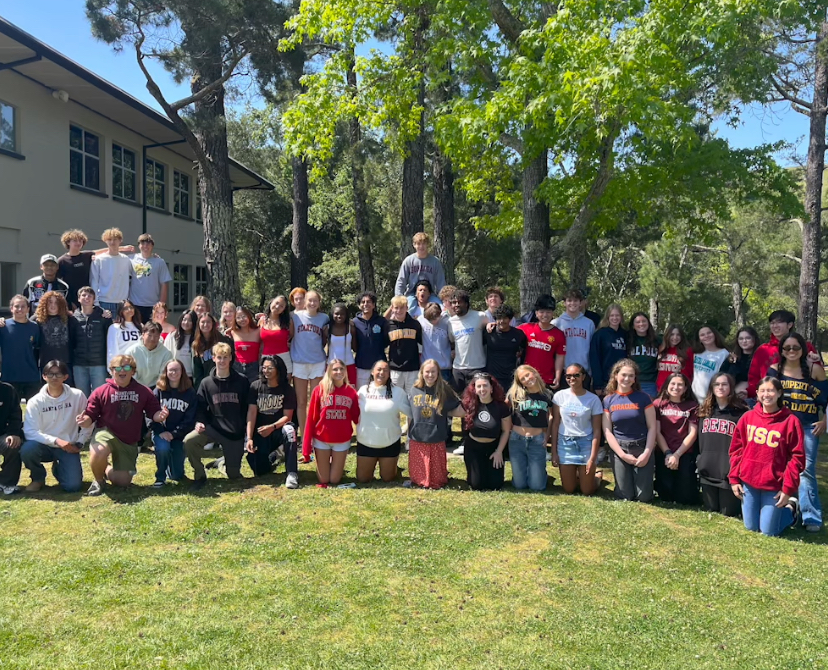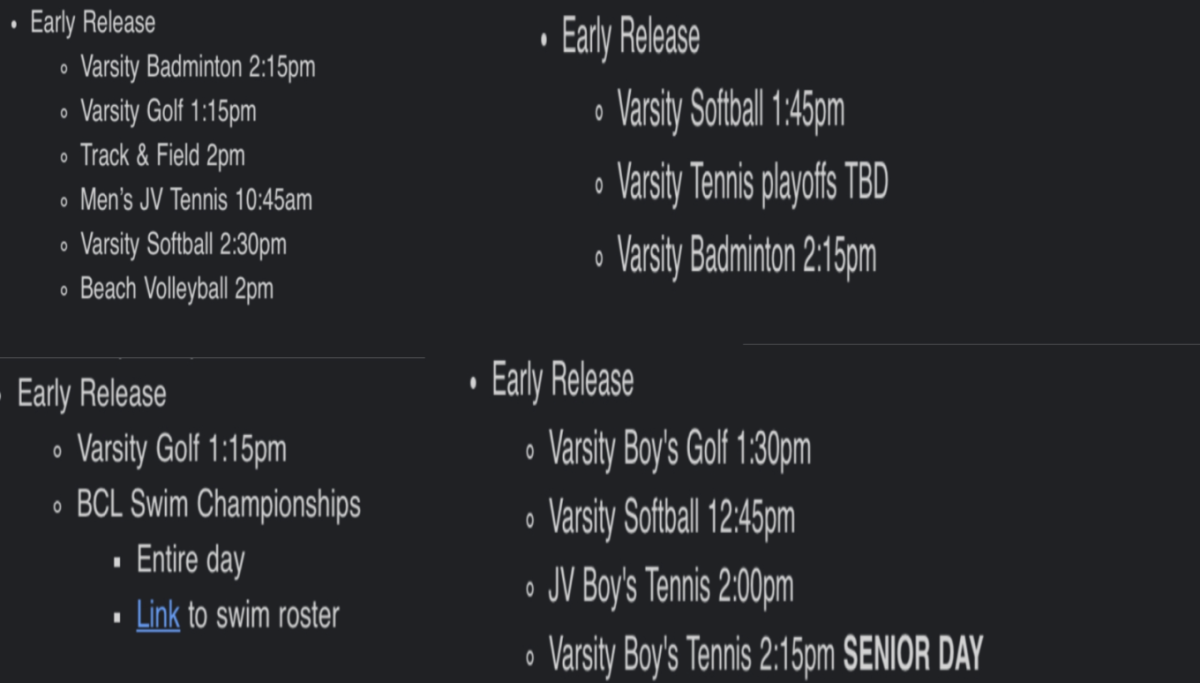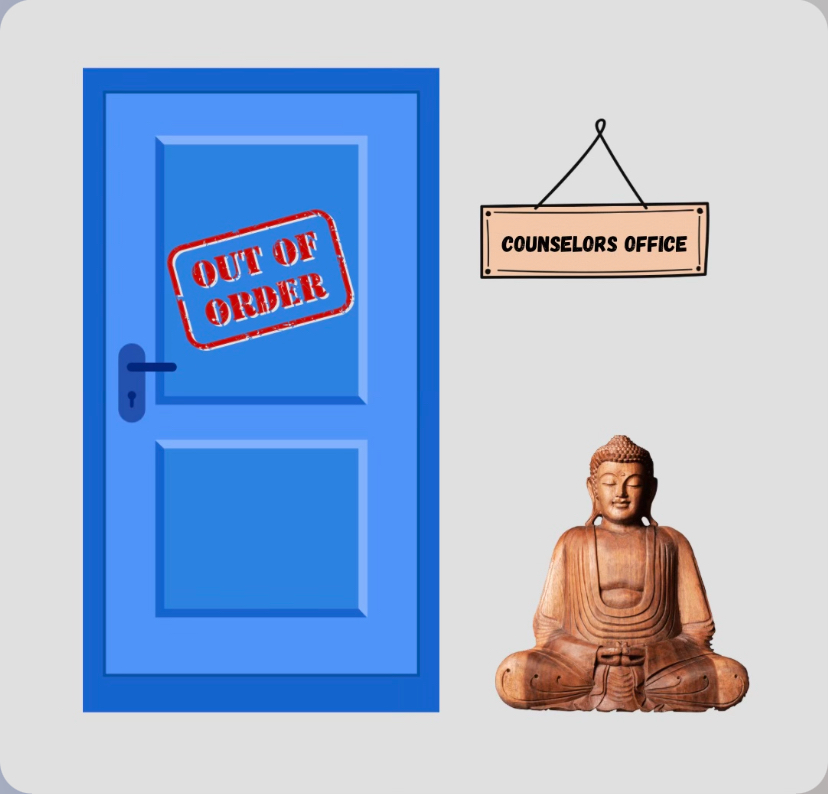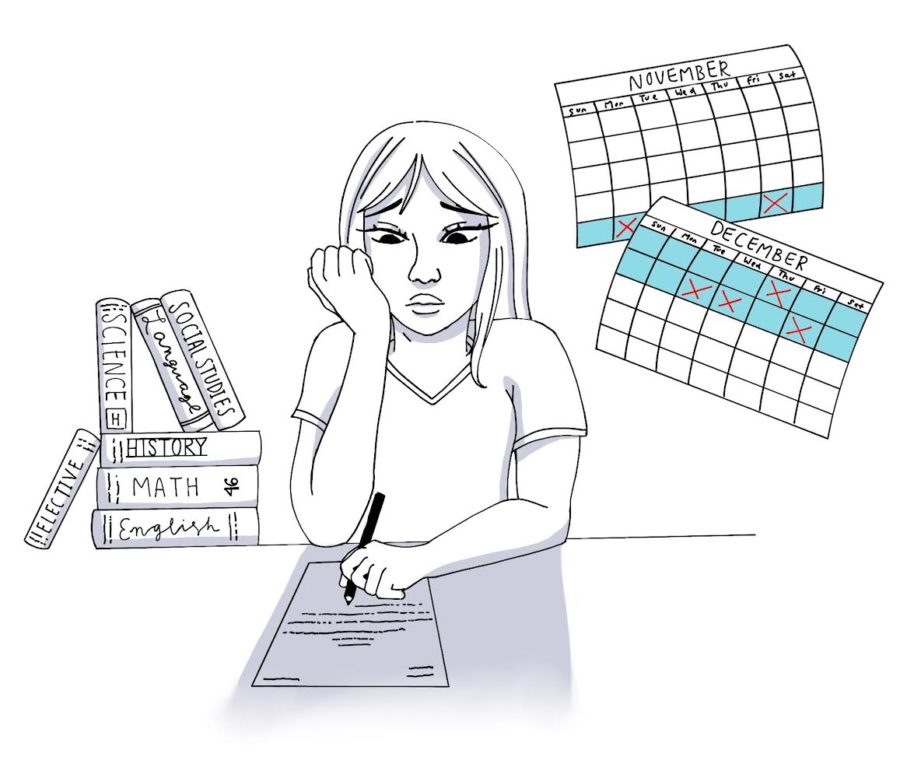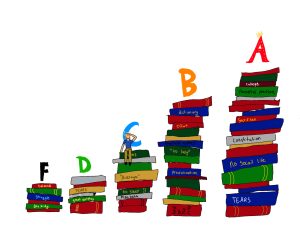The merriest season of all: finals season and the stress that comes with it
The time before and after Thanksgiving break is extremely stressful for students with a combination of large amounts of homework and assessments for every class. Illustration by Monica Sanford
December 13, 2022
The week before Thanksgiving break should have been something that I was looking forward to, but it ended up being one of the worst weeks of high school so far. I had multiple large assignments each day for nearly every day of the week, and the toll it took on my mental health was undeniable. Teachers reference the “test calendar” often when referring to summative assignments, yet when put into action the days before Thanksgiving, it was extremely ineffective. I was overwhelmed and unable to focus on any kind of self-care due to the amount of work that I had to complete within a short timeframe. The lack of planning between teachers significantly impacted both my grades and mental health, and it’s something teachers need to be more conscious of for the stability of students’ mental health and academic success.
The period of time between the beginning of November and Christmas break is one of the most stressful times of the year for many students. During these weeks, teachers attempt to cram in content before finals and breaks. This period of time is also complicated by the college application process for seniors, an event that is complicated enough without the extra work from teachers. The decisions made during this period affect students’ very future, yet teachers continue to assign large-scale assessments that require more attention than students can provide. The sheer amount of assignments within a short period of time, on top of the application process, can be extraordinarily stress-inducing for students and have negative impacts on their grades.
Caitlin Clark, the academic dean at San Domenico, explained that having multiple summative assessments in one day can affect students’ ability to do well on all of them.
“I’ve seen the overwhelm, the stress, and the anxiety,” Clark said. “If you’re in your first-period assessment and you’re trying to focus, but you’re also stressed about the next two that you have that day, I think that that can really inhibit a student’s ability to be present and rested and prepared.”
A poll from San Domenico students shows that many students believe teachers are not distributing their major assignments sufficiently. 61 percent of students report that their teachers are not fairly spreading large assignments out during November and December, with 18 percent of students disagreeing and 21 percent of students saying that they are not sure.
The National Education Association has supported the unwritten “ten-minute rule” for decades–-a guideline for the amount of time spent on work outside of school. The rule states: For every grade, the amount of work recommended is approximately 10 minutes. For instance, ninth-grade students would have around 90 minutes of homework per night and 12th-grade students would have approximately 120 minutes, or two hours. The rule may be ineffective when applied to large assignments for multiple classes, but the core point stands: The recommended amount of work for students is far less than what is currently being assigned.
In addition to the amount of work not following guidelines from the National Education Association, I believe that there is an unmanageable amount of work from all classes combined. Teachers at San Domenico aren’t factoring in work also assigned by their colleagues, and as a result, the amount of work is nearly overwhelming.
It is, of course, reasonable for teachers to assign assessments in periods with large amounts of information in order to ensure student understanding. Content-heavy classes like math and history may require many assignments during the November-December period and so the workload is necessary. Many teachers use this as justification for having large amounts of assignments in the weeks leading up to breaks, yet they don’t consider that many other teachers are taking these same actions. With an average of 6-7 classes for students at San Domenico, oftentimes students have assessments for nearly every subject in a short period of time. In the week before Thanksgiving break, I spent nearly six hours a night preparing for various tests and assignments on the same days. If teachers are supposedly coordinating when their assessments are, why do students deal with having multiple large assessments on the same day?
The workload associated with these assignments can be demoralizing for students, and according to a study from the Centre for Occupational and Health Psychology in the United Kingdom, “High workload was also associated with greater course stress and higher negative well-being.” It is important for teachers to recognize the impact that a heavy workload can have on students, and how deeply it can affect their mental health.
The weight of the workload can also have physical effects like neglect of mental and physical health in order to complete work on time. One of the prime examples of this is a lack of sleep when students have to study or complete major assignments. Paola Flores-Fuentes, a senior at San Domenico, head of the mental health club, has seen this firsthand in the dorms.
“Many [students] have not been sleeping because of the amount of work teachers are piling on,” Flores said. “Some teachers have been giving assessments even this week [the week before finals], which is supposed to be review only. Many of the boarders I have seen study from after school to six, and from seven to midnight.”
Although teachers may provide support for major assignments such as office hours and review time during class, the most effective way to slow down increasing stress levels and support the academic success of students is for teachers to coordinate all of their major assignments. I urge teachers at San Domenico to communicate with their colleagues about major assignments in their classes and use the information to create an assessment calendar that better reflects a manageable workload. In addition, it is important that students communicate with their teachers and use the resources available to them to manage the workload to the best of their ability. These actions will surely have a positive impact on student performance and mental health.





